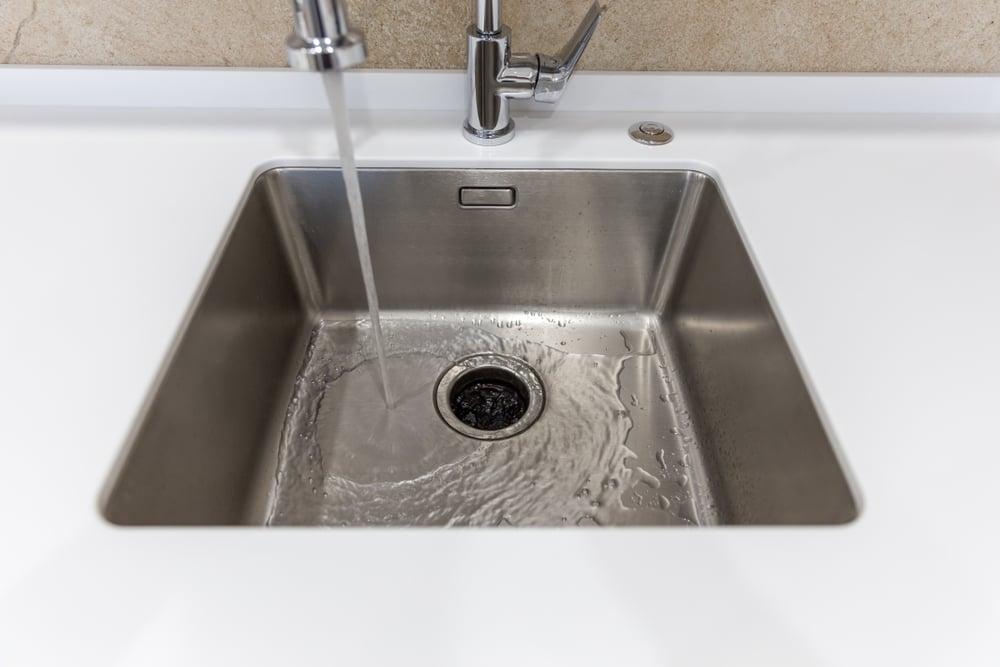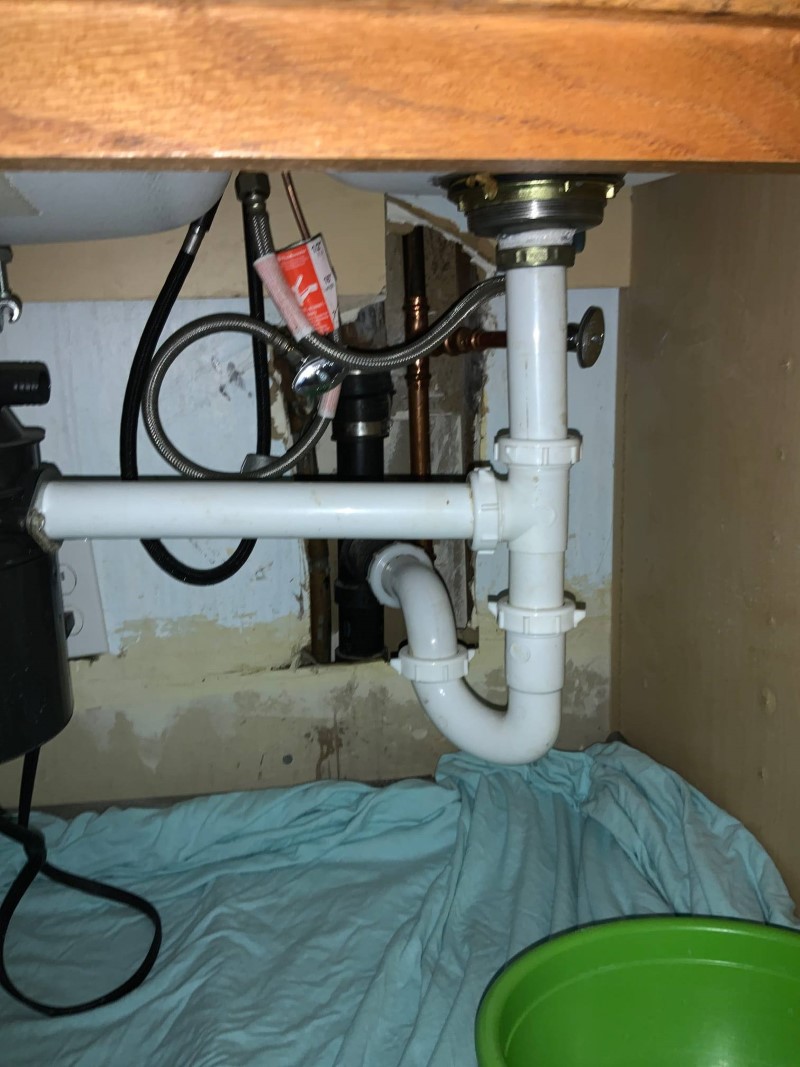Speedy Solutions for Fixing a Dripping Waste Disposal Unit
Speedy Solutions for Fixing a Dripping Waste Disposal Unit
Blog Article
Are you trying to locate resources around Why Is My Garbage Disposal Leaking From the Bottom??

Garbage disposals are vital kitchen area devices that assist in throwing away food waste effectively. However, a dripping garbage disposal can be a discouraging and unpleasant issue to deal with. The good news is, many leakages can be dealt with quickly with a few easy steps. In this article, we will go over how to deal with a leaking garbage disposal successfully.
Intro
Garbage disposals are installed under cooking area sinks and are made to shred food waste right into smaller sized items, enabling it to pass through the plumbing system quickly. While these gadgets are typically dependable, leaks can occur gradually because of damage, loosened links, or damages to the device.
Step-by-Step Guide to Taking Care Of a Dripping Waste Disposal Unit
Shut off the Power
Prior to trying any repair work, make certain that the power to the waste disposal unit device is switched off to stop the risk of electrical shock.
Find the Leakage
Determine the specific place of the leakage and figure out the reason
Tighten Connections
Make use of a wrench to tighten up any loosened links between the disposal unit and the pipes system.
Change Seals or Gaskets
If the leakage results from worn seals or gaskets, get rid of the old components and replace them with brand-new ones.
Patching Fractures or Openings
For splits or openings in the disposal system, usage epoxy or a suitable patching material to secure the broken area.
Determining the Resource of the Leak
Before attempting to take care of a leaking garbage disposal, it is necessary to identify the source of the leakage. This can normally be done via visual assessment or by conducting easy tests.
Visual Evaluation
Examine the waste disposal unit unit meticulously for any indications of water leakage. Pay close attention to locations around seals, gaskets, and connection points.
Checking for Leaks
One way to examine for leaks is by running water with the disposal unit and looking for any noticeable signs of leakage.
Common Sources Of Leakages in Waste Disposals
Worn Seals and Gaskets
Seals and gaskets play an essential function in stopping water from leaking out of the waste disposal unit. In time, these parts can wear away, resulting in leaks around the disposal device.
Loose Connections
The connections in between the garbage disposal and the pipes system can become loosened with time, creating water to leak out during procedure.
Fractures or Holes in the Disposal Unit
Physical damage to the waste disposal unit, such as splits or holes in the real estate, can also lead to leaks.
Tools and Products Needed for Fixing a Dripping Waste Disposal Unit
Before beginning the fixing process, collect the required tools and products, consisting of a screwdriver, flexible wrench, plumbing's putty, replacement seals or gaskets, and epoxy or patching material for fixing fractures or holes.
Checking the Waste Disposal Unit After Repair Work
When the repair service is full, test the waste disposal unit by running water via it to make sure that the leak has been resolved.
Preventive Upkeep Tips to Prevent Future Leakages
To avoid future leakages, it is vital to carry out normal upkeep on your garbage disposal. This consists of keeping it tidy, avoiding putting non-food things or tough items down the disposal, and occasionally looking for leakages or other issues.
Conclusion
To conclude, dealing with a dripping waste disposal unit is a reasonably simple procedure that can be completed with fundamental devices and products. By complying with the steps described in this write-up and practicing preventative upkeep, you can keep your waste disposal unit in good working condition and prevent pricey repair services in the future.
What to Do About a Leaking Garbage Disposal
A leaking garbage disposal often goes unnoticed until you confront a sopping cabinet, a foul-smelling puddle, or an audible drip-drip-drip from the unit. The fix can be frustrating, too, because the leak can stem from a number of components in the system. Fortunately, with a little sleuthing, you can zero in on the leak and—depending on the exact location—stop the icky oozing and repair the component that caused it. Worst case scenario, if it turns out that the garbage disposal must be replaced, installing a new one is a reasonable do-it-yourself task for those with basic plumbing skills. Read on to keep the cash you’d otherwise hand over to a pro.
Prepare to find the leak
Prior to testing the garbage disposal for leaks, unplug it at the wall outlet and turn off the power from the breaker box to prevent electrical shock. Then insert a watertight sink stopper into your sink drain and wipe the unit dry with a clean cloth. In any handy container, mix a few drops of food coloring into a few cups of water, and pour the dyed water onto the sink stopper to help you locate the leak.
Investigate the source
the top, where the disposal meets the sink drain the side, where the dishwasher hose or main drain pipe connects to the disposal or the bottom of the unit Inspect each of these locations while gliding a light-colored rag over the unit; the dyed water will readily show on the rag and reveal the location of the leak. If a leak isn’t immediately apparent, remove the sink stopper and pour a few more cups of dyed water down the sink drain, then check for leaks again. Leaks near the top of the unit are more likely to show themselves while the sink is plugged, while side and bottom leaks are more noticeable while the sink is unplugged.
The metal sink flange that sits directly inside the sink drain is typically sealed around the top with plumber’s putty (a clay-like sealant) and then secured from under the sink with bolts. If the plumber’s putty deteriorates, or the bolts loosen, the flange can no longer form a watertight seal between the sink drain and the disposal—which could cause a leak at the top of the unit.
To reseal the leaky flange, you must first detach the garbage disposal. Start by loosening the screws securing the main drain pipe to the disposal, then loosen the screws in the metal clamp securing the dishwasher hose to the disposal and detach the drain pipe and dishwasher hose from the disposal. Loosen the screws in the mounting ring that connects the disposal to the metal mounting assembly beneath the sink, then pull down the disposal and carefully set it on a clean, dry surface. Loosen the bolts in the mounting assembly with a wrench, then pull down the mounting assembly and set it near the disposal.

I came across that article about Garbage Disposal Leaking From Bottom when doing a search on the search engines. Make sure you set aside a second to share this blog entry if you liked it. Thank you for taking the time to read it.
View More Report this page